Dear Ironman, Here’s What We Can Learn from the Women’s-Only Championship
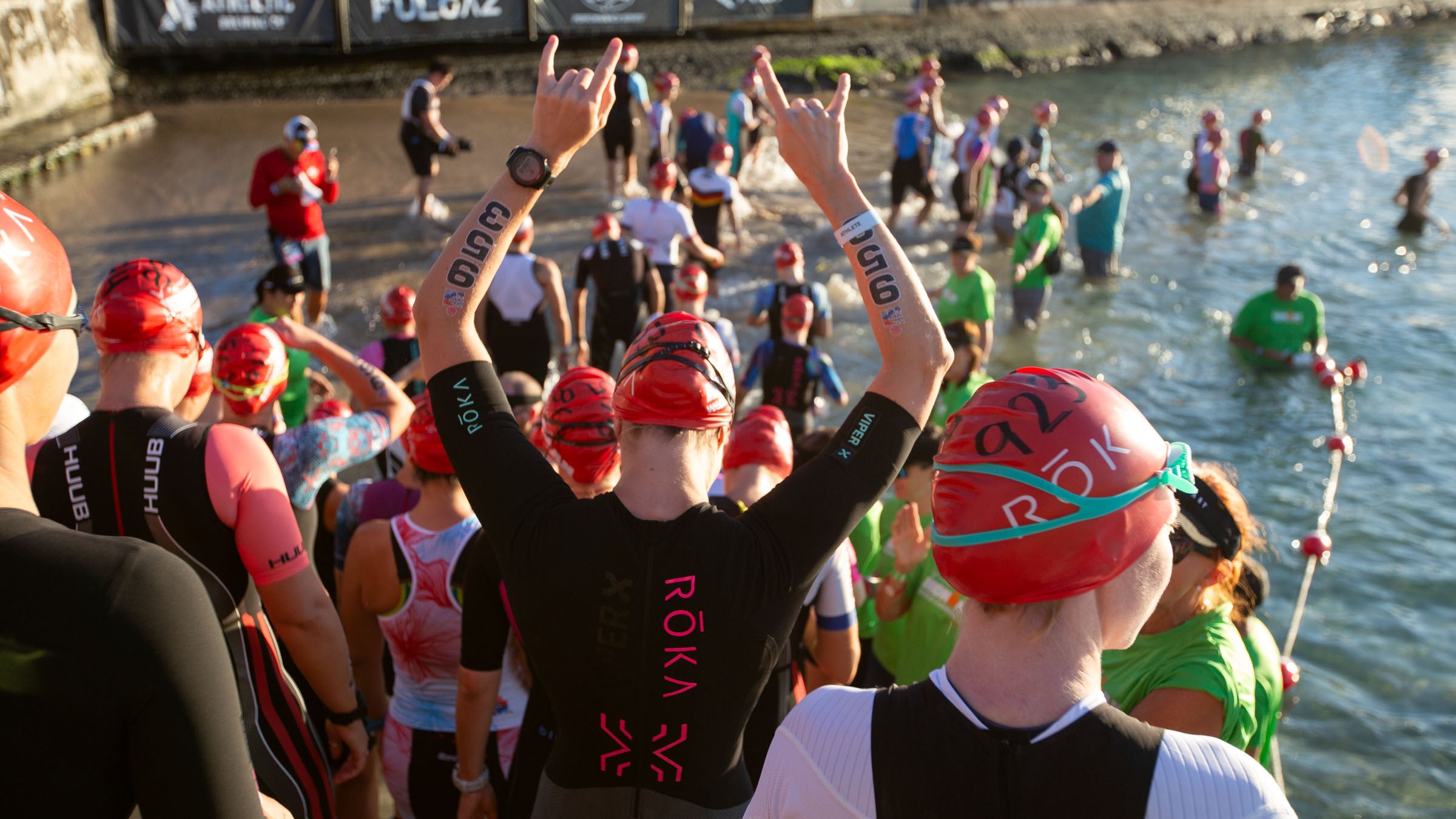
Women from pros to age groupers share what they hope Ironman carries over into the world championship once the genders combine. (Photo: Brad Kaminski/Triathlete)
On the flight to Kona, Hawaii, last weekend, the United Airlines pilot walked down the aisle chatting with a few of us headed to the 2025 women’s Ironman World Championship.
It struck me how different this felt from years past. I’ve flown to Kona at least 20 times – eight times to race myself, sometimes to cheer, sometimes with my husband, who’s raced here four times. And almost every year, when people find out that I’m traveling to the Ironman World Championship, the question has been the same:
“Is your husband racing?”
Not this time.
The pilot already knew who the key players were. He’d seen the coverage, heard the buzz. This year, the women were taking the spotlight on the sport’s biggest stage.
That difference – being recognized as the main event – captures exactly what makes the women’s-only Ironman World Championship so special. For just the third time, the world’s toughest endurance event isn’t framed as a men’s race that women also do; it’s our race.
When the championship returns to a single-day, co-ed format in 2026, that spotlight will inevitably fade. The women’s field, roughly a quarter of the total start list, will once again be folded into a larger story. What many will miss isn’t separation. It’s visibility: the chance for women to take center stage in a sport where they’re coming from behind.
But we have three years to learn from, and hopefully carry with us as the event returns to a mixed-gender format in 2026.
At the 2025 Ironman World Championship in Kona, women own the island
“At most Ironman races, women make up maybe 20 percent of the field. Here, you look around and it’s all people like you: women doing the thing they love. That doesn’t happen anywhere else. We should just savor it while we can.”
Germany’s Laura Philipp, the defending Ironman World Champion, knows what that spotlight means.
“I told myself to really enjoy this,” she told Triathlete during race week. “It’s the last time we’ll have the women here by ourselves. Having the whole focus on us – it feels incredibly special.”
Philipp, one of the favorites to win on Saturday, isn’t exaggerating. This is, after all, the third and last time that the women will have their own championship weekend, where the women’s race truly stands alone.
“When I watched the men’s race in Nice last month, it was so entertaining,” Philipp says. “But I kept thinking, – how could anyone possibly cover both races at once? The dynamics are so complex. I can’t imagine we’d get the same attention if it were combined.”
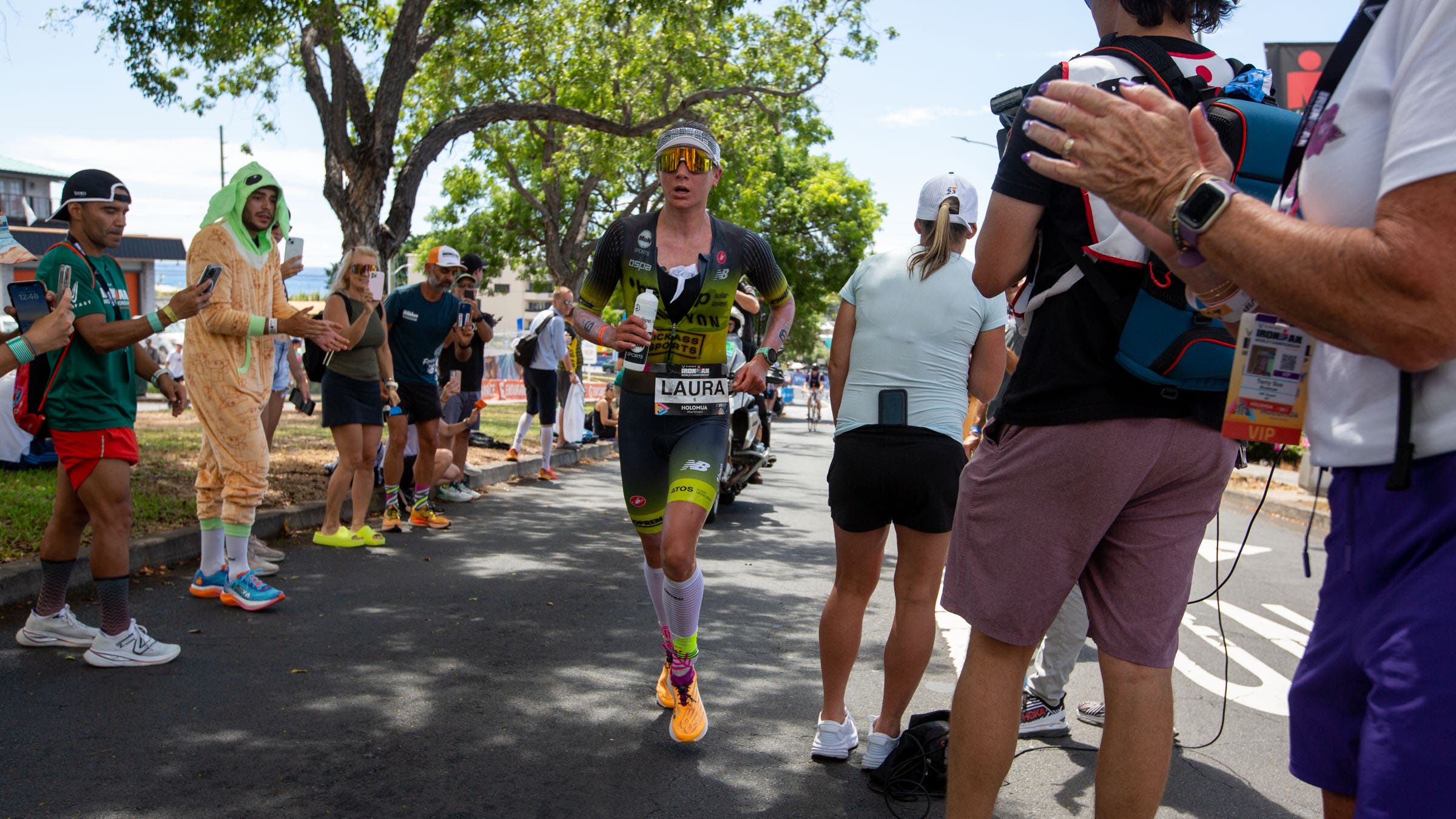
For Philipp, the women’s-only format is about more than media coverage. “It feels different racing just with women,” she says. “There’s this positive energy: you support each other, you respect each other. You don’t get caught in someone else’s ego. Every woman you pass smiles or waves. It’s competitive, but in a good way.”
That energy extends beyond the pro field. Walk through Kona this week and you can feel it: lighter, more connected, still serious but less adversarial. The Queen K hums with tension, but it’s a quieter, collective kind of power.
In Kona, a different kind of loud
Age-group veteran Sandy Thompson has raced here multiple times and says the tone of the women’s-only event is unmistakable.
“It’s louder in a different way,” she says. “Women actually talk to each other out there. There’s encouragement, even mid-race. You’ll hear people cheering for strangers. With the guys, it’s usually heads down, full gas. This feels more like we’re in it together.”
That theme of “women lifting women” comes up often.
“There’s something pretty special about looking around and seeing all the women around you choosing to do the hardest thing they could find,” says Victoria Feng, an age-group athlete from California.
“When you’re miles from any spectators, you just know everyone around you is out there to lift you up. It’s not about flexing egos or being angry someone passed you – it’s all, ‘You go, girl. Keep going.’”
For Feng, who swims at the front of her age group, that environment is empowering but also rare. “At most Ironman races, women make up maybe 20% of the field,” she explains. “Here, you look around and it’s all people like you: women doing the thing they love. That doesn’t happen anywhere else. We should just savor it while we can.”
Feng also worries about what happens when the field merges again. “It’s not a solvable problem now that they’ve decided to combine it,” she says. “But I hope Ironman thinks about how to make the swim and start times fair for women who aren’t as confident in the water. The more crowded it gets, the more those athletes will be at risk.”
That warmth and mutual respect resonate far beyond the pier. Amy Rappaport, racing her fourth Kona, says the locals notice it, too.
“The people who live here tell me this week is their favorite,” she says. “They say the athletes are polite at the restaurants, considerate on the roads. It changes the feel of the whole town.”
Rappaport hopes that spirit doesn’t disappear when the men return. “Maybe give the guys a heads-up,” she jokes. “If you see a pink swim cap, maybe don’t mow her down. On the bike, three feet of space instead of three inches would be great.”
Fair play on the Queen K
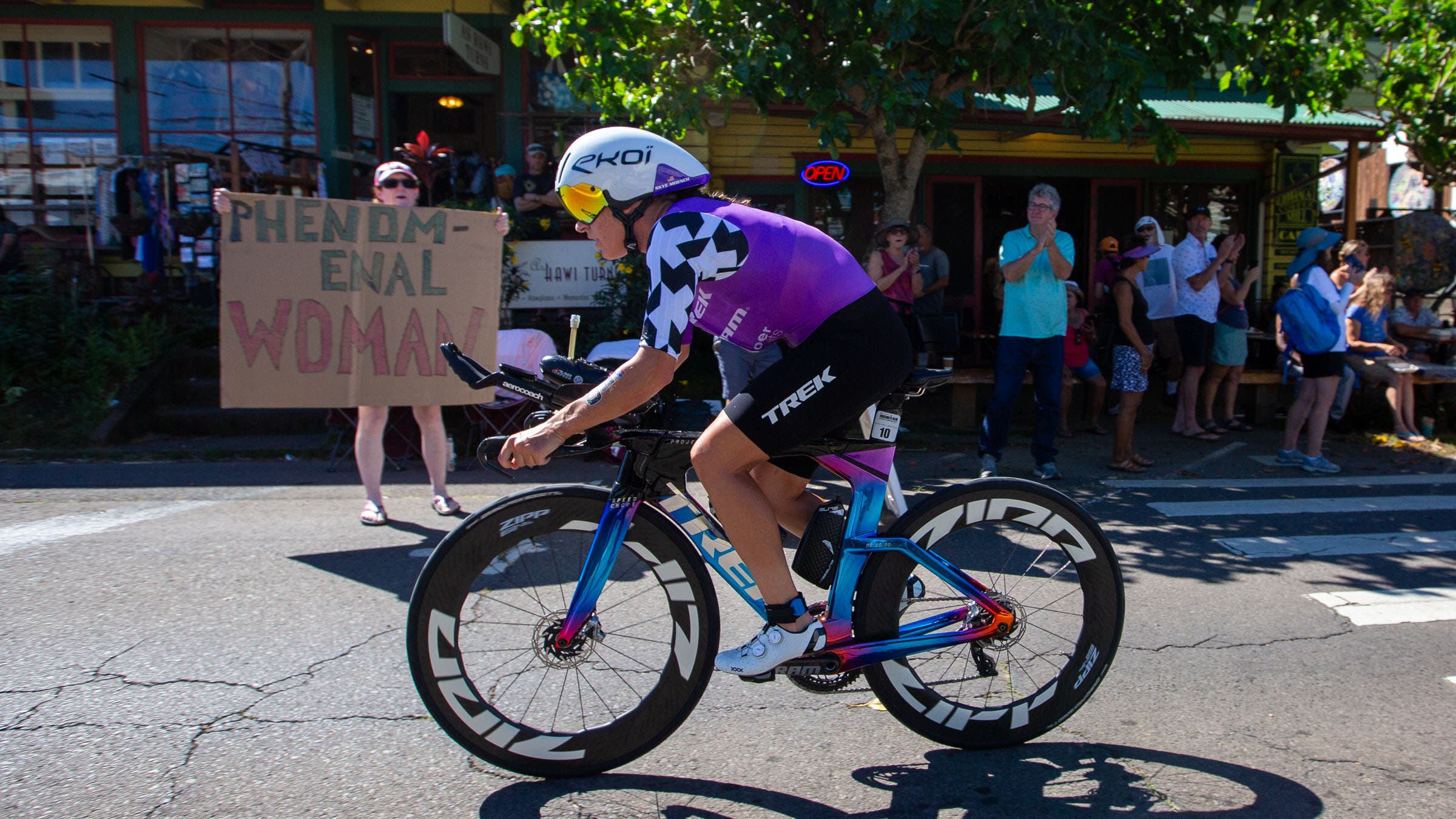
Fairness may not be as visible as camaraderie, but for many women, it’s the single biggest reason they’ll miss this format.
Jana Richtrova, a four-time age-group champion and coach, has raced Kona under nearly every start configuration imaginable. Her verdict is blunt.
“When men and women share the course, it’s chaos,” she says. “You get massive draft packs, crowded aid stations, stronger female swimmers catching the back of the men’s field. It affects everything.”
In 2023, when the women raced in Kona without men on course, she noticed an immediate change. “You could actually race your own race,” she says. “The roads were open. Everyone around you was doing her work. It felt fair.”
Richtrova worries that fairness will vanish again once the championship reunites in 2026. “Even with start gaps, if the women go last, we’ll end up riding through a wall of men,” she says. “And it’s not just frustrating, it changes outcomes. I have the power of data to prove it.”
She confesses that she doesn’t have a solution besides wanting to see two days of racing in Kona: “Going back to one day, the women’s racing will feel like an afterthought. I will 100% miss the fair race.”
Women don’t just compete – they belong
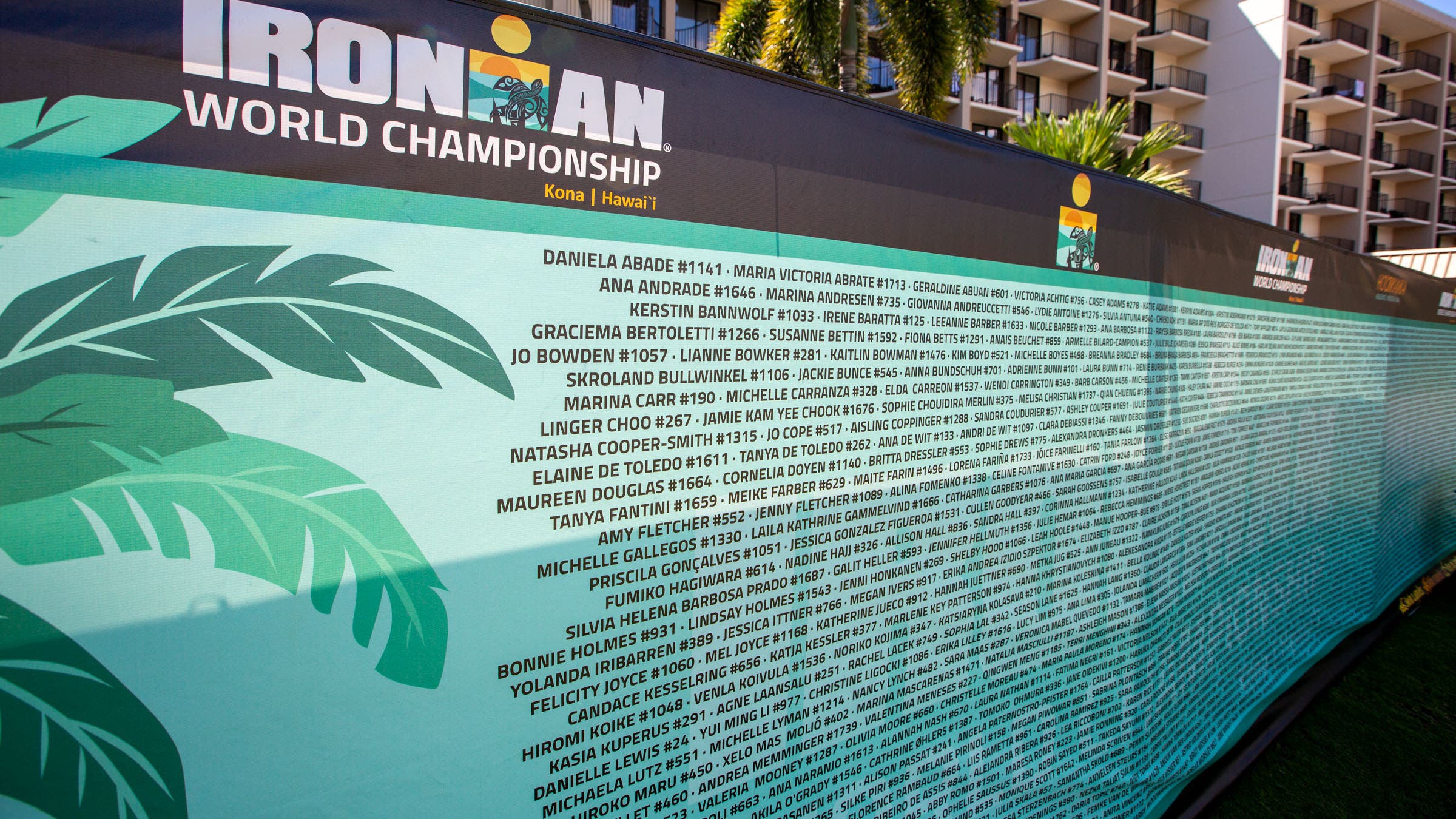
For Victoria Brumfield, CEO of USA Triathlon, the value of a women-only race is as much emotional as logistical.
“The value of a women’s-only race, to me, is feeling welcomed and feeling valued and feeling like I belong,” she says.
In a sport that can be intimidating and overwhelming given the amount of gear and required training, Brumfield notices “how much more community-focused it feels being surrounded by so many women.”
Brumfield, who turns 47 the day after the race, is competing in her first Kona. “What I love about the world championships is it gives something for people to aspire to,” she says. “I saw the world championships on TV when I was in high school, and remember thinking like, ‘I wish I were that kind of person.’ Now I am that kind of person!”
For Brumfield, racing the Ironman World Championship is a dream come true.
“I’ve trained really hard for this,” she says. She didn’t qualify through the usual route, racing instead on behalf of the Ironman Foundation. But she’s an Ironman finisher, and she intends to add another to the list on Saturday.
“I think one of the things that’s going to help me finish it is being surrounded by so many incredible women who’ve come before me, and who are racing next to me and are doing the same thing,” she says.
Brumfield also sees the symbolic power of the week.
“It’s just really fun to drive down Ali’i Drive and see all these badass women running, with men chirping behind them on a bike trying to keep up,” she says with a grin. “It flips the narrative.
Women supporting women in more ways than one
That story reaches beyond sport. For Kebby Holden, founder of women’s endurance apparel brand Coeur Sports, the women-only championship has been both a business boom and a cultural moment.
“Our sales at the women’s Ironman are phenomenal,” she says, gesturing toward the packed Coeur booth at the expo. “When you have almost 2,000 women from all over the world here, it’s huge for us economically. But more than that, it’s a community-builder. Women connect with each other and with brands that actually speak to them.”
Holden says the contrast with a mixed-gender event is stark. “When 75% of the field is men, it’s harder to be seen. You have to be louder, more aggressive with marketing. Here, we’re front and center.”
She hopes Ironman will carry that lesson forward. “Even when it’s a combined race, they could do more to highlight women-focused brands,” she suggests. “Call us out on the expo stage. Promote female pros in the coverage. Remind people that women drive this sport too.”
What women want to see at the 2026 Ironman World Championship
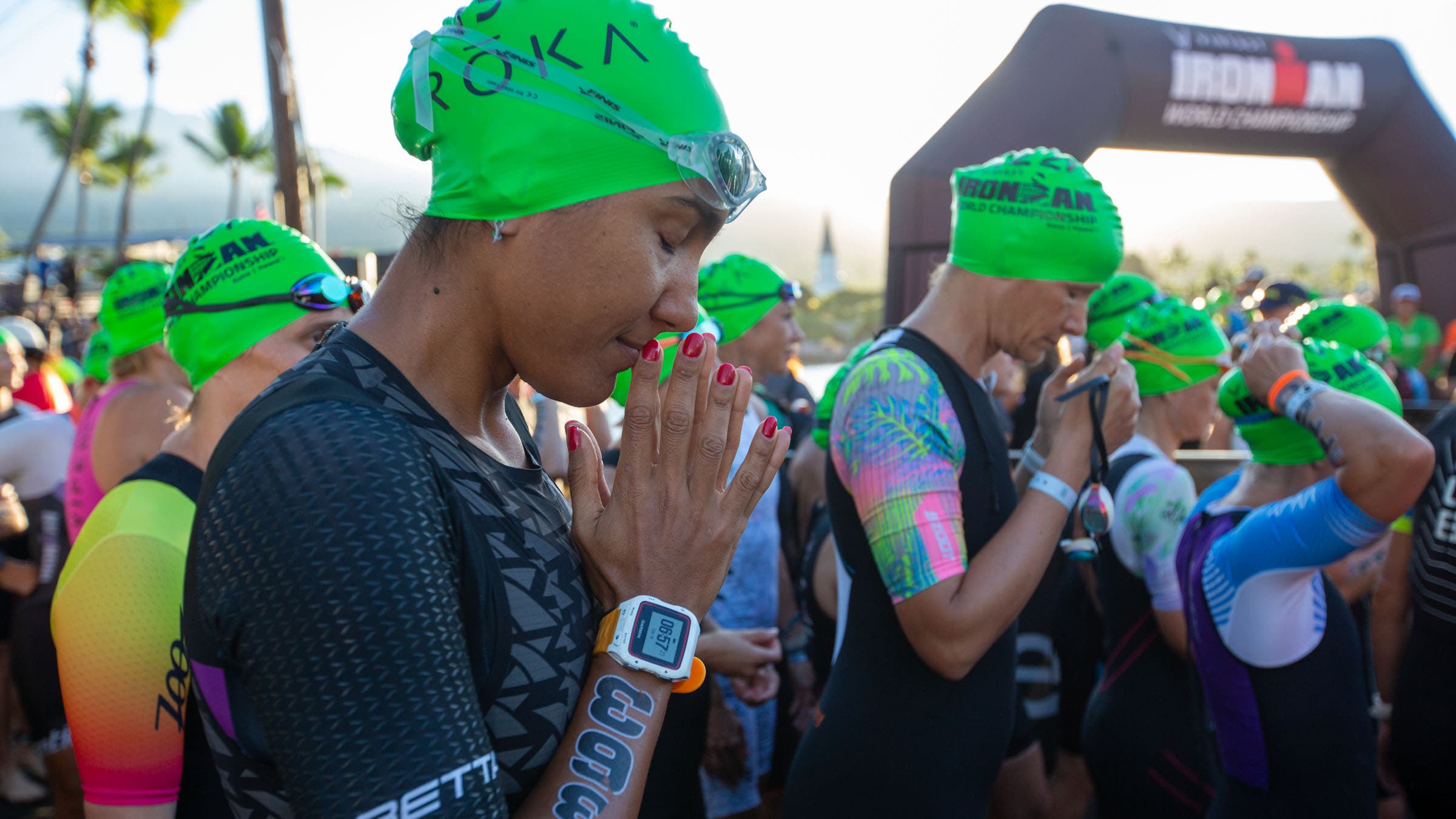
The women-only format has lasted just three seasons. The logistics are brutal, and the organization is eager to reunite the fields. But nearly everyone interviewed agrees: the lessons from these years shouldn’t be lost.
Philipp hopes Ironman will prioritize coverage parity. “Give the women their own dedicated broadcast crew,” she says. “Make sure our stories aren’t buried.”
Richtrova argues for start times that protect fair racing. “If the men start first, the women’s race becomes an afterthought,” she says. “Separate the fields enough that we can race clean.”
Feng adds another reminder: “Think about how to organize the swim waves so the younger, faster athletes aren’t swimming through and over the older competitors.”
Holden wants the community focus preserved. “Keep the women’s events and panels, the group swims, the storytelling. Those things make people feel part of something bigger.”
A new Kona magic
As the island readies for Saturday’s race, the mood among athletes is both celebratory and wistful. They know this is the last time they’ll have Kona to themselves before the men return in 2026. They also know what they’ve built.
Over three years, they’ve proven that a women-only championship can generate global media attention, economic momentum, and a sense of belonging that stretches from the pros to the back of the pack. They’ve shown what triathlon looks like when women aren’t the afterthought but the headline.
Walking through Kona’s streets this week, you see it everywhere: women in packs on their shake-out runs, laughing through nerves; women hugging at coffee meetups; women lining up at the pier at sunrise, pink caps bobbing in the surf. The island feels different – still very much a proving ground for triathlon’s best, but with an added layer of celebration.
Philipp sums it up best: “There’s a magic here when it’s all women.”
She is sad to see the women-only race disappear. “I think we miss an opportunity to grow the female side of our sport.”
Both genders will reunite here in 2026. The field size will almost double from the 1,600 competitors here this year. The spotlight will split.
Brumfield sees that future clearly:
“I think bringing the men and women back together has so many incredible advantages, and I think people are really excited to have the singular world championship here in such a sacred place…But it will be different.”
But for now, one more Saturday in October, the world’s toughest women will have the stage to themselves. And they intend to make it unforgettable.